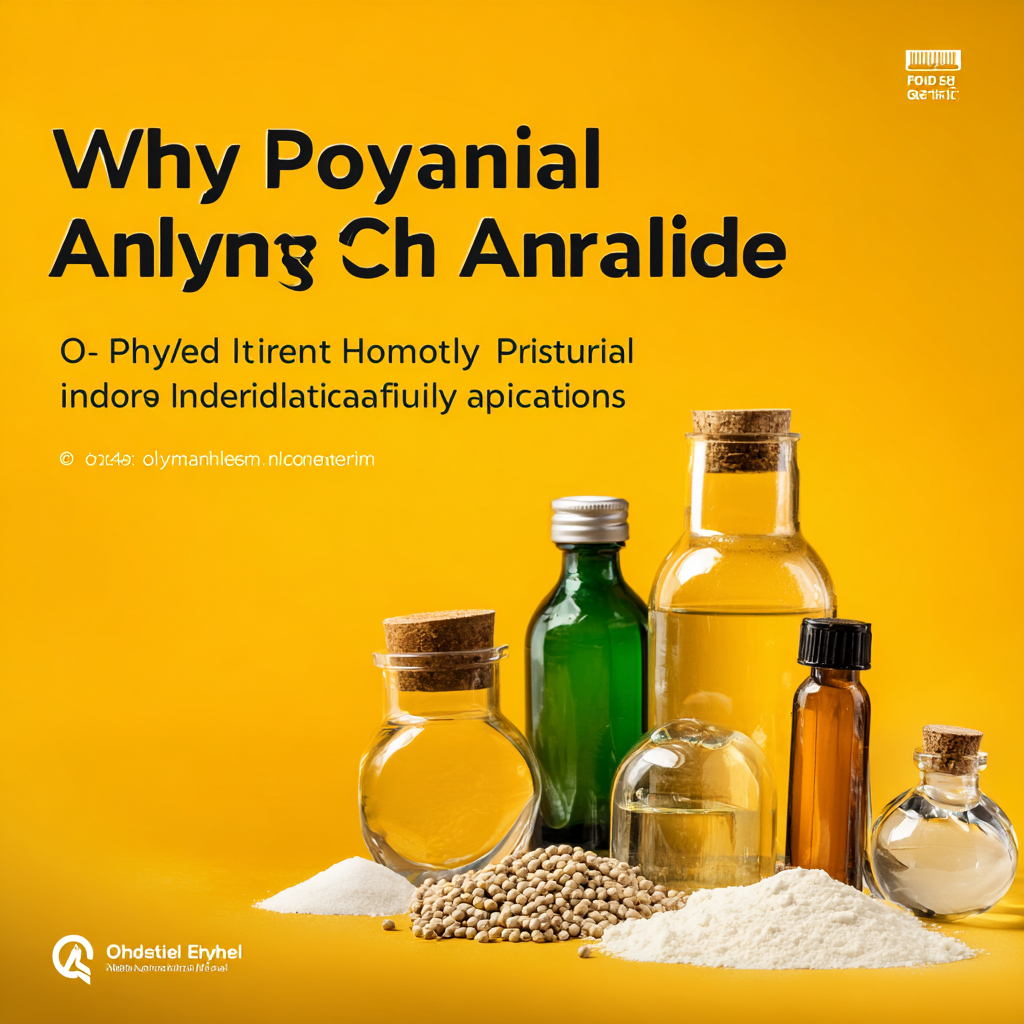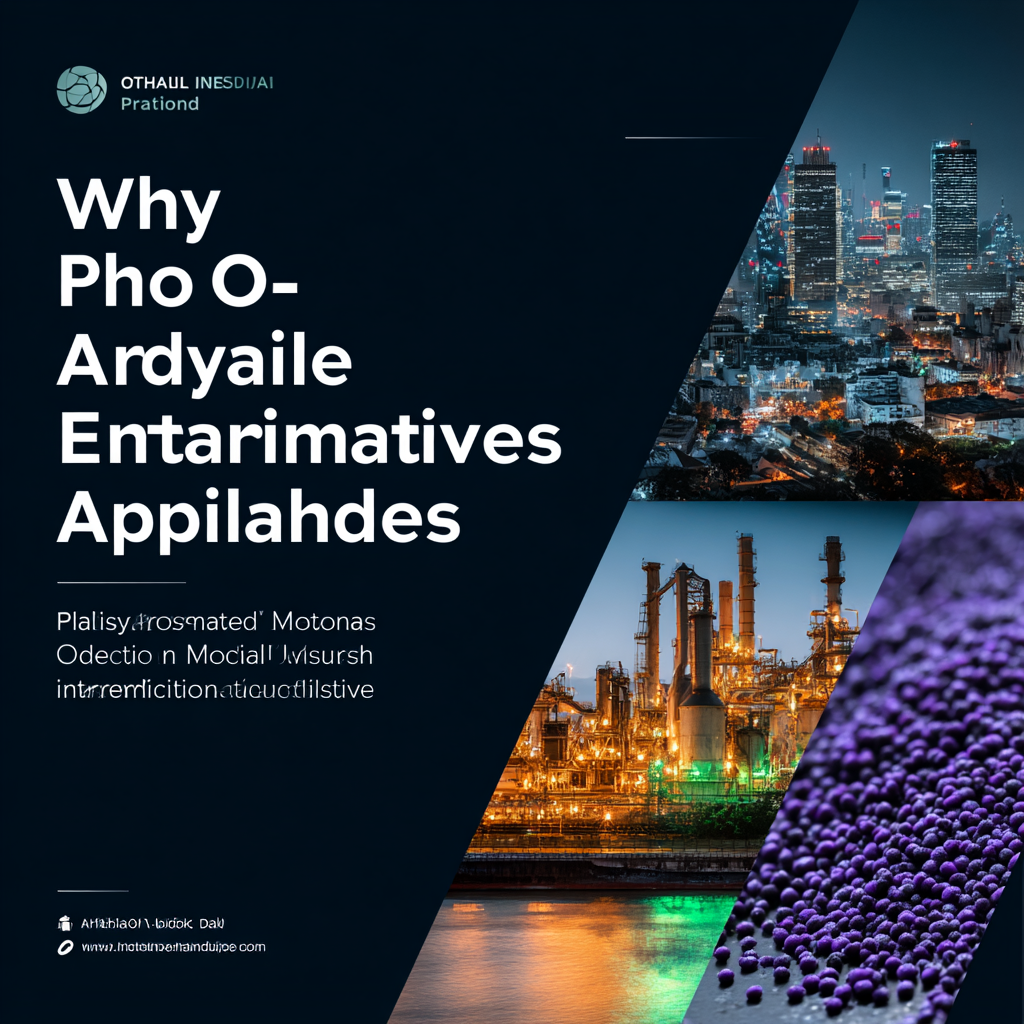Leave Your Message
O Phthalic Anhydride has become a cornerstone in modern industrial applications, playing a vital role in various sectors ranging from plastics to pharmaceuticals. This versatile chemical compound is not only crucial for producing high-performance materials but also significantly contributes to enhancing product formulations that meet contemporary demands. As industries evolve towards innovation and sustainability, the role of O Phthalic Anhydride becomes increasingly significant, ensuring that manufacturing processes remain efficient and environmentally friendly.
In the ensuing exploration, we will delve into the top five reasons why O Phthalic Anhydride is essential. By examining its diverse applications, we can better understand how this compound transforms raw materials into valuable products, thus driving economic growth and technological advancement. The discussion will cover its role in the production of high-grade resins, pigments, and plasticizers, highlighting its contributions to durability and performance.
Ultimately, the importance of O Phthalic Anhydride cannot be understated in today’s industrial landscape. Its chemical versatility not only enhances the functionality of everyday products but also aligns with the wider goals of sustainability and innovation that define modern manufacturing practices.

O Phthalic Anhydride (OPA) plays a pivotal role in various industrial applications due to its versatile properties. This compound is essential in the production of plasticizers, which are crucial for enhancing the flexibility and durability of plastics. In fact, the global market for such materials is projected to reach $15.1 billion in 2024, growing at a compound annual growth rate (CAGR) of 4.3% through 2032. This growth indicates an increasing reliance on OPA as industries seek more efficient manufacturing solutions.
Moreover, OPA is integral in the production of resins, agrochemicals, and dyes, all of which enhance product performance across various sectors. With technological advancements, the efficiency of OPA usage in industrial processes has improved significantly, leading to innovative applications that push the boundaries of manufacturing capabilities. As industries continue to embrace automation and smart technologies, like the recent developments in PLC systems, the demand for OPA will likely surge, underscoring its importance in modern industrial applications.
 O Phthalic Anhydride is a crucial component in various industrial applications, primarily due to its ability to serve as a key building block for the production of plastics, resins, and intermediates. One of the most significant applications is in the manufacturing of polyesters, which are widely used in the textile industry and for producing films and coatings. The compound's versatility makes it an ideal choice for enhancing the performance and durability of materials, contributing to the growing demand in sectors like automotive and construction.
O Phthalic Anhydride is a crucial component in various industrial applications, primarily due to its ability to serve as a key building block for the production of plastics, resins, and intermediates. One of the most significant applications is in the manufacturing of polyesters, which are widely used in the textile industry and for producing films and coatings. The compound's versatility makes it an ideal choice for enhancing the performance and durability of materials, contributing to the growing demand in sectors like automotive and construction.
Another vital application of O Phthalic Anhydride is in the production of alkyd resins, used in paints and coatings, which are expected to see continuous growth as environmental regulations push for more sustainable options. The market for related products, such as polyisobutylene succinic anhydride (PIBSA), is predicted to expand significantly, illustrating the increasing relevance of phthalic anhydride derivatives. The PIBSA market is anticipated to grow from $0.74 billion in 2023 to $1.2 billion by 2032, highlighting the essential nature of O Phthalic Anhydride in driving advancements in various industries.
O Phthalic Anhydride (OPA) plays a pivotal role in the production of various innovative products that drive modern industrial applications. Characterized by its versatility, OPA is chiefly utilized to manufacture unsaturated polyester resins, plasticizers, and additives essential in sectors ranging from automotive to construction and electronics. The global Phthalic Anhydride market is a testament to this, with its valuation soaring from USD 5.3 billion in 2023 and projected to reach approximately USD 7.68 billion by 2032. This substantial growth underscores the compound's invaluable contribution to the production of high-performance materials that are increasingly in demand.
In India, the Phthalic Anhydride market is witnessing similar trends, with a total market volume of 201.22 Million Tonnes in 2024, expected to increase to 245.08 Million Tonnes by 2030. This surge indicates a robust expansion in domestic manufacturing capabilities and the rise of innovative applications derived from OPA throughout various industries. As companies focus on sustainability and efficiency, OPA-derived products are becoming integral for producing lightweight, durable, and environmentally friendly materials. The increasing adoption of such advanced products highlights the strategic importance of O Phthalic Anhydride in supporting modern industrial needs.
The production of o-phthalic anhydride (OPA) is vital for numerous industrial applications, yet it raises important environmental considerations that cannot be overlooked. The synthesis of OPA typically involves processes that release various pollutants and greenhouse gases into the atmosphere. The most common method, the oxidation of ortho-xylene, while efficient for production, emits substantial carbon dioxide and other hazardous byproducts that contribute to air quality deterioration and climate change.

In response to these environmental challenges, industries are increasingly adopting greener alternatives and technologies aimed at minimizing the ecological footprint of OPA production. Advances in catalysis and process optimization, such as using more sustainable feedstock and implementing closed-loop systems, are being employed to reduce emissions and waste. Furthermore, regulatory frameworks are compelling manufacturers to invest in cleaner production techniques, promoting the transition towards more sustainable industrial practices without compromising the supply and effectiveness of this essential compound in applications such as plastics, dyes, and resins.
The usage of o-phthalic anhydride (OPA) has seen significant evolution, driven by trends in sustainability and the increasing demand for high-performance materials. According to a recent report by MarketsandMarkets, the global o-phthalic anhydride market is projected to reach USD 4.17 billion by 2025, growing at a CAGR of 5.6% from 2020. This growth is largely fueled by the rising demand for unsaturated polyester resins (UPRs) in the construction and automotive sectors, where lightweight and durable materials are crucial.
Additionally, the emphasis on eco-friendly products is pushing developments in the production processes of o-phthalic anhydride. Innovations such as the use of bio-based feedstocks and greener synthesis routes are gaining traction. A report published by Research and Markets highlights that the demand for sustainable chemicals, including OPA-derived products, will increase as industries strive to reduce their carbon footprints. As manufacturers pivot towards more sustainable practices, the future of o-phthalic anhydride usage appears to be not only vital for traditional applications but also transformative for emerging green technologies.







